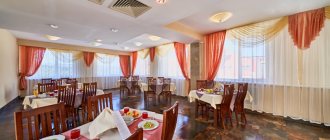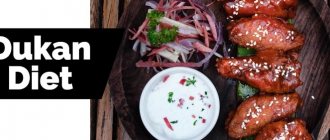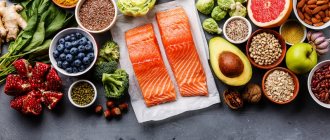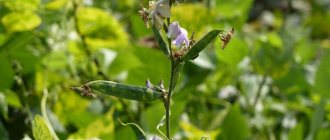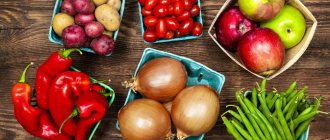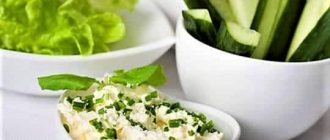The article was written by allergist-immunologist, pediatrician Euromed Kids Artem Andreevich Batin
At the first visit to an allergist and a food-related allergic reaction is suspected, the patient is recommended a hypoallergenic diet .
The hypoallergenic diet developed by immunologist, academician Andrei Dmitrievich Ado has already become classic.
The Ado diet is a whole nutritional system that involves the exclusion of all potential allergens and histamine liberators .
IMPORTANT! Information from the article cannot be used for self-diagnosis and self-medication! Only a doctor can prescribe the necessary examinations, establish a diagnosis and draw up a treatment plan during a consultation!
After the patient’s health with an allergic reaction has normalized, the products are gradually returned to the diet, while carefully monitoring the reaction to each food product.
The goals of recommending a hypoallergenic diet are to eliminate all potential allergens until the acute condition resolves.
General rules
The term “allergy” means a state of increased sensitivity of the body to various irritants (allergens), manifested by a specific reaction based on immunologically (IgE) mediated reactions.
Allergens can be both substances of organic and inorganic origin, as well as physical factors (heat, cold, ultraviolet rays). There are many groups of allergens, the most important of which are: food, medicinal, household, pollen, epidermal, industrial, infectious (fungal, viral, bacterial, parasitic), insect and others. The mechanism of the body's specific reaction to an allergen is the development of sensitization (the production of antibodies in response to the initial entry of the allergen into the body) and the development of an allergic reaction when the allergen re-enters an already sensitized body. An allergic reaction is caused by a number of biochemical processes that occur with the release of biogenic amines ( histamine , serotonin ), which damage cells of various tissues and organs.
Allergy treatment involves, first of all, eliminating or reducing contact with the causative allergen. It is the diet for allergies that is the most important factor, allowing both to exclude a food allergen from the diet in the presence of an allergic reaction to food, and to reduce the general state of hyperreactivity of the body when reacting to allergens of other groups (fungal, household, medicinal, pollen and others), since during this period, any minor irritant can intensify the clinical symptoms of an existing disease ( urticaria , asthma , allergic rhinitis , angioedema ) or cause a new systemic or local (itching of the skin/skin rashes) allergic reaction.
However, diet therapy is of greatest importance in cases where clinical manifestations are caused by allergies to food products, including medications used in the food industry and in raising animals and poultry ( salicylates , antibiotics ). The diet of this category of patients requires the most painstaking and careful correction, but the effect of following an individual elimination or general hypoallergenic diet can be very significant.
An antiallergic diet should be based on a number of principles:
- exclusion from the diet of foods that contain causally significant and cross-allergens;
- exclusion of products with high allergenic activity;
- using only fresh products, excluding genetically modified and shelf-stable products (canned food, preserves), as well as products containing food additives (preservatives, dyes, flavorings);
- exclusion of histamine-releasing products that provoke the release of histamine from the cells of the gastrointestinal tract (coffee, cow's milk, chocolate, orange juice, wheat bran), as well as histamine-carrying products (strawberries, tomatoes, cocoa, legumes, hazelnuts, herring fillet, tuna , smoked meats, spinach, cheeses) containing a large amount of biogenic amines - histamine , tyramine , betaphylethylamine ;
- do not allow excess animal proteins in the diet;
- limiting the consumption of simple carbohydrates and table salt, as well as foods that irritate the gastrointestinal mucosa - spicy, fried, salty foods and alcohol-containing drinks;
- adequate replacement of excluded products to ensure quantitative and qualitative compliance of the diet with the physiological needs of the patient’s body for basic nutrients .
When preparing a diet or if there is a need for its correction, it is important to know what allergenic activity a particular product has, and to have a list of hypoallergenic food products:
- Products with a high degree of allergenic activity include: chicken eggs, crustaceans, cow's milk and whole milk products, chocolate, cheese, fish, coffee, mustard, wheat, nuts, strawberries, wild strawberries, raspberries, grapes, persimmons, cocoa, tomatoes, beets, celery, melon, carrots, pineapples, blackberries, citrus fruits, honey, black currants, pomegranates, mushrooms, spices, sauces, red caviar, canned and pickled foods, smoked meats, carbonated and alcohol-containing drinks;
- products with an average degree of allergenic activity include: pork, red currants, turkey, potatoes, rabbit, peas, peaches, corn, rice, apricots, green peppers, buckwheat, rye, bananas, buckwheat, cranberries;
- Products with a low degree of allergenic activity include: lamb, beef (low-fat varieties), boiled chicken, pumpkin (light colors), zucchini, turnips, squash, green and yellow apples, gooseberries, plums, white currants, green cucumbers, watermelon , almonds, fermented milk products, garden greens, offal (liver, tongue, kidneys), rice, oatmeal and pearl barley, butter, olive and sunflower oil, pears, dried fruits.
Diet for allergies in adults
The general principles of dietary nutrition for people susceptible to allergies are reflected in the nonspecific hypoallergenic diet - Table No. 5 GA (hypoallergenic), which is based on Diet No. 5 , intended for patients with diseases of the liver and biliary system. In the acute period of an allergic disease, the basis of the diet should be anti-allergenic foods. As a rule, the patient must follow a strict diet until the manifestations of the disease disappear permanently. The duration of such a diet should be approximately 3 weeks for adults and about 10 days for a child.
As the symptoms subside, the menu can be expanded to include products with an average degree of allergenic activity, which are administered in small quantities. First, white bread, boiled lean fish of white varieties, fresh onions, freshly squeezed juices and fruit purees, and compotes are introduced into the diet. In this case, green and yellow vegetables and fruits are first introduced, and in the absence of rashes, after a few days orange (pumpkin) and red fruits/vegetables are introduced.
Each new product should be introduced no more often than once every three days, taking into account the body’s reaction to each newly introduced product. If there are no negative reactions, then this product is safe for health and can be included in the basic diet for allergy sufferers. If after its administration the allergic reaction resumes, then it should be completely excluded from the diet.
Despite the fact that a strict hypoallergenic diet in the acute period of the disease includes a limited list of products, the patient’s nutrition should be physiologically complete, but not excessive in the content of micronutrients (especially proteins) and energy value. It is extremely important to exclude from the menu all allergenic foods and dishes in which they are present even in minimal quantities. So, if a patient has an allergic reaction to chicken eggs, it is necessary to exclude mayonnaise, creams, casseroles, baked goods and all dishes whose recipe includes eggs or its components.
If the causally significant allergen is not known, then all products with a high degree of allergenic activity must be excluded from the diet - milk, eggs, seafood, fish, fish caviar, citrus fruits, tomatoes, honey, chocolate, melon, strawberries, nuts.
The diet is limited to foods containing easily digestible carbohydrates: honey, sugar, sweets, confectionery, jam, chocolate. It is allowed to replace sugar with saccharin , aspartame , xylitol . The diet is enriched with foods containing large amounts of calcium (fermented milk products, cottage cheese), which have antiallergic and anti-inflammatory effects. At the same time, foods containing oxalic acid , which reduces the absorption of calcium.
Salt and all salty foods are subject to restrictions. The diet increases the content of foods rich in vitamins (allowed vegetables and fruits) and bioflavonoids , which strengthen the walls of blood vessels.
Particular attention should be paid to products that have a pronounced cross-allergic reaction. In case of intolerance to one type of food, other types must be excluded from the diet. Below are some of these foods and a list of foods that cross-react with each of them.
- Fish - with all types of river/sea fish, seafood (shrimp, crabs, lobsters, caviar, mussels, lobsters).
- Cow's milk - products containing cow's milk proteins, veal, beef, and products made from them, goat's milk.
- Potatoes - tomatoes, red peppers, eggplants, paprika.
- Chicken egg - chicken meat and broth, duck meat; mayonnaise, quail meat and eggs, creams and sauces containing chicken egg components.
- Nuts - other types of nuts, flour (rice, oatmeal, buckwheat), kiwi, sesame, mango, poppy.
- Bananas - kiwi, avocado, melon, wheat gluten.
- Citrus fruits - all other types of citrus fruits (orange, grapefruit, tangerine, lemon).
- Strawberries - currants, raspberries, blackberries, lingonberries.
- Legumes - mango, peanuts, soybeans, lentils.
- Plum - apricots, cherries, almonds, peaches, nectarines, cherries, apples, prunes.
- Kefir (kefir yeast) - yeast dough, mold varieties of cheese (Dor-Blue, Roquefort, Brie), kvass.
Excluded are strong meat, mushroom and fish broths, spices and seasonings, spicy, smoked dishes and sauces. When cooking meat, the first broth must be poured out, and cereals must be pre-soaked in water for 2 hours before cooking.
When choosing products, it is extremely important to pay attention to the presence of food additives, which in many cases are allergens, and also to know their coded designation. The following food additives pose the greatest danger:
- Antioxidants: E 321 ( butyl hydroanisole / butyl hydroxytoluene ).
- Preservatives: E 220-227 (sulfites), E 249-252 (nitrites), E 210-219 ( benzoic acid and derivatives), E 200-203 ( sorbic acid ).
- Dyes: E 122 (azorubine), E 102 ( tartrazine ), E 110 (yellow-orange), E 124 (red cochineal), E127 ( erythrosine ), E 151 (diamond black BN).
- Flavorings: B 550-553 (glutamates).
- Flavoring additives: E 621 ( monosodium glutamate ), E 622 ( monosodium glutamate ), E 623 ( monosodium glutamate ), E 624 ( monosodium glutamate ) and E 625 ( magnesium glutamate ).
It is advisable to prepare dishes in the diet by baking or boiling; frying foods is not allowed. This provides chemical sparing of the gastrointestinal mucosa and reduces the absorption of allergens in the intestines. For complete digestion of food proteins, which are potential allergens, it is recommended to eat fractionally and reduce the size of portions.
The need to follow a diet for allergies
First of all, a hypoallergenic diet is designed to reduce the intake of substances into the body to which there is increased sensitivity (sensitization). Secondly, it allows you to identify allergens and limit their entry into the digestive tract in the future.
In addition, a hypoallergenic table practically eliminates the manifestations of allergies, which reduces the need to use medications.
A balanced, rational and healthy diet normalizes the functioning of the gastrointestinal tract, increases overall tone, saturates the body with vitamins and removes not only allergens, but also harmful decay products.
Authorized Products
The anti-allergic diet includes lean (without skin) boiled or stewed dietary meat of chicken, rabbit or turkey. Wheat, buckwheat and oatmeal porridge are allowed from cereals.
The first courses are prepared without frying in a weak vegetable broth with the addition of various garden herbs. Potatoes, boiled in individual pieces or mashed in water, are allowed as a side dish.
The diet may include yogurt without additives, fresh low-fat cottage cheese, low-fat fermented milk products, bran/whole grain bread, durum wheat pasta, and dry biscuits.
Fats include vegetable sunflower or olive oil. Vegetables: lettuce, cucumber, stewed/boiled zucchini, cabbage, onion.
Table of permitted products
| Proteins, g | Fats, g | Carbohydrates, g | Calories, kcal | |
Vegetables and greens | ||||
| eggplant | 1,2 | 0,1 | 4,5 | 24 |
| zucchini | 0,6 | 0,3 | 4,6 | 24 |
| cabbage | 1,8 | 0,1 | 4,7 | 27 |
| broccoli | 3,0 | 0,4 | 5,2 | 28 |
| Brussels sprouts | 4,8 | 0,0 | 8,0 | 43 |
| cauliflower | 2,5 | 0,3 | 5,4 | 30 |
| green onion | 1,3 | 0,0 | 4,6 | 19 |
| bulb onions | 1,4 | 0,0 | 10,4 | 41 |
| cucumbers | 0,8 | 0,1 | 2,8 | 15 |
| squash | 0,6 | 0,1 | 4,3 | 19 |
| parsley | 3,7 | 0,4 | 7,6 | 47 |
| salad | 1,2 | 0,3 | 1,3 | 12 |
| celery | 0,9 | 0,1 | 2,1 | 12 |
| asparagus | 1,9 | 0,1 | 3,1 | 20 |
| Jerusalem artichoke | 2,1 | 0,1 | 12,8 | 61 |
| dill | 2,5 | 0,5 | 6,3 | 38 |
| beans | 7,8 | 0,5 | 21,5 | 123 |
| garlic | 6,5 | 0,5 | 29,9 | 143 |
| lentils | 24,0 | 1,5 | 42,7 | 284 |
Fruits | ||||
| pears | 0,4 | 0,3 | 10,9 | 42 |
| nectarine | 0,9 | 0,2 | 11,8 | 48 |
| peaches | 0,9 | 0,1 | 11,3 | 46 |
| apples | 0,4 | 0,4 | 9,8 | 47 |
Berries | ||||
| gooseberry | 0,7 | 0,2 | 12,0 | 43 |
| black currant | 1,0 | 0,4 | 7,3 | 44 |
Nuts and dried fruits | ||||
| flax seeds | 18,3 | 42,2 | 28,9 | 534 |
| sunflower seeds | 20,7 | 52,9 | 3,4 | 578 |
Cereals and porridges | ||||
| buckwheat (kernel) | 12,6 | 3,3 | 62,1 | 313 |
| semolina | 10,3 | 1,0 | 73,3 | 328 |
| oat groats | 12,3 | 6,1 | 59,5 | 342 |
| cereals | 11,9 | 7,2 | 69,3 | 366 |
| wheat bran | 15,1 | 3,8 | 53,6 | 296 |
Flour and pasta | ||||
| pasta | 10,4 | 1,1 | 69,7 | 337 |
Dairy | ||||
| dairy products | 3,2 | 6,5 | 4,1 | 117 |
| kefir 0% | 3,0 | 0,1 | 3,8 | 30 |
| kefir 1% | 2,8 | 1,0 | 4,0 | 40 |
Cheeses and cottage cheese | ||||
| cottage cheese 0.6% (low fat) | 18,0 | 0,6 | 1,8 | 88 |
| curd tofu | 8,1 | 4,2 | 0,6 | 73 |
Meat products | ||||
| boiled beef | 25,8 | 16,8 | 0,0 | 254 |
| beef stew | 16,8 | 18,3 | 0,0 | 232 |
Bird | ||||
| boiled chicken | 25,2 | 7,4 | 0,0 | 170 |
| steamed chicken breast | 23,6 | 1,9 | 0,0 | 113 |
| boiled turkey fillet | 25,0 | 1,0 | — | 130 |
Fish and seafood | ||||
| seaweed | 0,8 | 5,1 | 0,0 | 49 |
Oils and fats | ||||
| butter | 0,5 | 82,5 | 0,8 | 748 |
| linseed oil | 0,0 | 99,8 | 0,0 | 898 |
| olive oil | 0,0 | 99,8 | 0,0 | 898 |
| sunflower oil | 0,0 | 99,9 | 0,0 | 899 |
Non-alcoholic drinks | ||||
| mineral water | 0,0 | 0,0 | 0,0 | — |
| green tea | 0,0 | 0,0 | 0,0 | — |
Juices and compotes | ||||
| rose hip juice | 0,1 | 0,0 | 17,6 | 70 |
| * data is per 100 g of product | ||||
How to supplement the treatment of dermatitis, besides diet?
Following the rules of a hypoallergenic diet is very important, but diet alone cannot cope with dermatitis. In order for the patient to recover as quickly as possible, we suggest that you supplement the therapy prescribed by your doctor with the use of La-Cri products.
The regenerating cream contains extracts of string, violet, walnut, bisabolol, panthenol and avocado oil. These components have an anti-inflammatory, antipruritic and softening effect.
Intensive cream is used to soften and moisturize very dry skin. Contains wheat germ, shea and jojoba oils, violet and licorice extracts, bisabolol, allantoin and lecithin.
Cleansing gel is an optimal replacement for conventional cleansers. The composition includes licorice and walnut extracts, hypoallergenic detergent components, avocado and olive oil derivatives.
Fully or partially limited products
An anti-allergenic diet involves excluding from the diet such products as meat and fish broths and all first courses based on them; fatty red meats, smoked meats, duck, goose, whole milk; most sausages, chicken eggs, “red” fish of all kinds; chocolate, citrus fruits, flour products and sweets, seafood (shrimp, mussels, squid), honey and honey products (jelly, propolis), any salty foods, pickled vegetables, canned food; culinary and animal fats, cream, salty and fatty cheeses, sour cream, sweet curds.
Products containing quickly digestible carbohydrates - sugar, confectionery, jam, honey, ice cream, jams, sweets - are excluded. Pasta, semolina, soy, and white rice are also subject to restrictions.
Vinegar, all seasonings (ketchup, mustard, mayonnaise, horseradish), mushrooms, eggplant, melon, pineapple, butter dough, as well as red and orange fruits/vegetables (tangerines, tomatoes, red apples, oranges, beets, radishes) are excluded from the diet , carrots, radishes, strawberries, strawberries), nuts (peanuts and hazelnuts), coffee.
It is prohibited to include in the hypoallergenic menu any products containing food additives (dyes, preservatives), fruit/vegetable juices from prohibited berries, fruit tea, sweet carbonated drinks and all drinks containing alcohol and carbon dioxide.
Table of prohibited products
| Proteins, g | Fats, g | Carbohydrates, g | Calories, kcal | |
Vegetables and greens | ||||
| carrot | 1,3 | 0,1 | 6,9 | 32 |
| salad pepper | 1,3 | 0,0 | 5,3 | 27 |
| tomatoes | 0,6 | 0,2 | 4,2 | 20 |
Fruits | ||||
| oranges | 0,9 | 0,2 | 8,1 | 36 |
| bananas | 1,5 | 0,2 | 21,8 | 95 |
| pomegranate | 0,9 | 0,0 | 13,9 | 52 |
| grapefruit | 0,7 | 0,2 | 6,5 | 29 |
| lemons | 0,9 | 0,1 | 3,0 | 16 |
| mango | 0,5 | 0,3 | 11,5 | 67 |
| tangerines | 0,8 | 0,2 | 7,5 | 33 |
Berries | ||||
| grape | 0,6 | 0,2 | 16,8 | 65 |
| Red currants | 0,6 | 0,2 | 7,7 | 43 |
Nuts and dried fruits | ||||
| nuts | 15,0 | 40,0 | 20,0 | 500 |
| raisin | 2,9 | 0,6 | 66,0 | 264 |
Cereals and porridges | ||||
| white rice | 6,7 | 0,7 | 78,9 | 344 |
Confectionery | ||||
| jam | 0,3 | 0,2 | 63,0 | 263 |
| jam | 0,3 | 0,1 | 56,0 | 238 |
| candies | 4,3 | 19,8 | 67,5 | 453 |
| pastry cream | 0,2 | 26,0 | 16,5 | 300 |
Ice cream | ||||
| ice cream | 3,7 | 6,9 | 22,1 | 189 |
Cakes | ||||
| cake | 4,4 | 23,4 | 45,2 | 407 |
Chocolate | ||||
| chocolate | 5,4 | 35,3 | 56,5 | 544 |
Raw materials and seasonings | ||||
| mustard | 5,7 | 6,4 | 22,0 | 162 |
| ketchup | 1,8 | 1,0 | 22,2 | 93 |
| mayonnaise | 2,4 | 67,0 | 3,9 | 627 |
| honey | 0,8 | 0,0 | 81,5 | 329 |
| vinegar | 0,0 | 0,0 | 5,0 | 20 |
Dairy | ||||
| condensed milk | 7,2 | 8,5 | 56,0 | 320 |
| cream | 2,8 | 20,0 | 3,7 | 205 |
| sour cream 30% | 2,4 | 30,0 | 3,1 | 294 |
| sour cream 40% (fat) | 2,4 | 40,0 | 2,6 | 381 |
Cheeses and cottage cheese | ||||
| cheese | 24,1 | 29,5 | 0,3 | 363 |
| feta cheese (made from cow's milk) | 17,9 | 20,1 | 0,0 | 260 |
| dor blue cheese | 21,0 | 30,0 | 0,0 | 354 |
| blue cheese | 17,6 | 31,0 | 1,8 | 363 |
| amber processed cheese | 7,0 | 27,3 | 4,0 | 289 |
| cottage cheese 18% (fat) | 14,0 | 18,0 | 2,8 | 232 |
Meat products | ||||
| pork | 16,0 | 21,6 | 0,0 | 259 |
| pork fat | 1,4 | 92,8 | 0,0 | 841 |
| salo | 2,4 | 89,0 | 0,0 | 797 |
| mutton | 15,6 | 16,3 | 0,0 | 209 |
Sausages | ||||
| smoked sausage | 16,2 | 44,6 | 0,0 | 466 |
| smoked sausage | 9,9 | 63,2 | 0,3 | 608 |
| sausages | 10,1 | 31,6 | 1,9 | 332 |
| sausages | 12,3 | 25,3 | 0,0 | 277 |
Bird | ||||
| smoked chicken | 27,5 | 8,2 | 0,0 | 184 |
| duck | 16,5 | 61,2 | 0,0 | 346 |
| smoked duck | 19,0 | 28,4 | 0,0 | 337 |
| goose | 16,1 | 33,3 | 0,0 | 364 |
Eggs | ||||
| chicken eggs | 12,7 | 10,9 | 0,7 | 157 |
Fish and seafood | ||||
| smoked fish | 26,8 | 9,9 | 0,0 | 196 |
| salted fish | 19,2 | 2,0 | 0,0 | 190 |
| Red caviar | 32,0 | 15,0 | 0,0 | 263 |
| black caviar | 28,0 | 9,7 | 0,0 | 203 |
| canned fish | 17,5 | 2,0 | 0,0 | 88 |
| semi-finished fish products | 12,5 | 6,7 | 14,7 | 209 |
| sardine | 20,6 | 9,6 | — | 169 |
| mackerel | 18,0 | 13,2 | 0,0 | 191 |
| cod (liver in oil) | 4,2 | 65,7 | 1,2 | 613 |
Oils and fats | ||||
| creamy margarine | 0,5 | 82,0 | 0,0 | 745 |
| coconut oil | 0,0 | 99,9 | 0,0 | 899 |
| palm oil | 0,0 | 99,9 | 0,0 | 899 |
| rendered beef fat | 0,0 | 99,7 | 0,0 | 897 |
| cooking fat | 0,0 | 99,7 | 0,0 | 897 |
| rendered pork fat | 0,0 | 99,6 | 0,0 | 896 |
Alcoholic drinks | ||||
| white dessert wine 16% | 0,5 | 0,0 | 16,0 | 153 |
| dry white wine | 0,1 | 0,0 | 0,6 | 66 |
| vodka | 0,0 | 0,0 | 0,1 | 235 |
| cognac | 0,0 | 0,0 | 0,1 | 239 |
| liquor | 0,3 | 1,1 | 17,2 | 242 |
| beer | 0,3 | 0,0 | 4,6 | 42 |
Non-alcoholic drinks | ||||
| cola | 0,0 | 0,0 | 10,4 | 42 |
| black coffee | 0,2 | 0,0 | 0,3 | 2 |
| Pepsi | 0,0 | 0,0 | 8,7 | 38 |
| sprite | 0,1 | 0,0 | 7,0 | 29 |
| tonic | 0,0 | 0,0 | 8,3 | 34 |
| energy drink | 0,0 | 0,0 | 11,3 | 45 |
Juices and compotes | ||||
| cranberry jelly | 0,0 | 0,0 | 13,0 | 53 |
| * data is per 100 g of product | ||||
What foods to exclude from the menu
If you are on a hypoallergenic diet, you should avoid the following foods:
- fish;
- citrus;
- nuts;
- coffee;
- chocolate;
- smoked meats;
- hard cheese;
- eggplant;
- eggs;
- tomatoes;
- mushrooms;
- honey;
- canned and pickled vegetables and fruits;
- mayonnaise and ketchup;
- alcohol;
- a pineapple;
- melon;
- all orange or red berries or fruits;
- spicy vegetables (radish, radish, horseradish);
- full-fat milk and dairy products;
- confectionery, fresh bread and pastries.
If you notice unwanted reactions (rashes, swelling, runny nose) after eating any other products (not on this list), they should also be completely excluded.
Hypoallergenic diet menu (Diet mode)
The food menu of a hypoallergenic diet during the acute period includes a small amount of permitted foods; as the patient recovers, the diet expands, taking into account the patient’s individual sensitivity to a specific product. Below is a sample menu for the week.
Monday
| Breakfast |
|
| Lunch |
|
| Dinner |
|
| Dinner |
|
Tuesday
| Breakfast |
|
| Lunch |
|
| Dinner |
|
| Dinner |
|
Wednesday
| Breakfast |
|
| Lunch |
|
| Dinner |
|
| Dinner |
|
Thursday
| Breakfast |
|
| Lunch |
|
| Dinner |
|
| Dinner |
|
Friday
| Breakfast |
|
| Lunch |
|
| Dinner |
|
| Dinner |
|
Saturday
| Breakfast |
|
| Lunch |
|
| Dinner |
|
| Dinner |
|
Sunday
| Breakfast |
|
| Lunch |
|
| Dinner |
|
| Dinner |
|
Why is this diet needed?
The primary goal of a hypoallergenic diet is to reduce the number of allergens entering the body. Products with sensitization can aggravate a person’s condition. Also, an important task of the diet is to determine the type of allergens and further reduce their number.
When using this diet, it is possible to minimize allergy symptoms, except in cases of particularly severe patient conditions, such as anaphylactic shock. Thanks to these properties of the diet, the need to take medications is reduced.
Nutrition during the diet is rational and balanced. This is important for all spheres of the body’s life, with diet having the greatest importance for the gastrointestinal tract. It helps to tone the body, saturate it with useful substances and speed up the process of removing toxins.
Dish recipes
The recipes are relatively simple and do not require special culinary skills. Some of them are given below.
First meal
Chicken soup with spinach
Prepare low-fat chicken broth (boil the meat without the skin). Add onion, spinach, sour cream and cook until tender. Season the finished soup with dill and a small piece of butter.
Cream of Turkey and Cauliflower Soup
Boil the turkey (200 g) in the first water for 30 minutes, then drain the broth and cook together with the shredded zucchini and cauliflower in the new water for another 40 minutes. Remove the meat from the soup and blend the vegetables in a blender until pureed. Add chopped turkey meat, season with sour cream and herbs.
Second courses
Boiled chicken breast with vegetables
Boil the chicken breast for 30 minutes, cool and cut into portions. Boil the vegetables - Brussels sprouts, green peas and green beans. Serve together, seasoning the vegetables with olive oil.
Dessert
Baked apples
Wash the apples, put them in the oven and bake until done at 1800 C.
SUNDAY
Breakfast: pies with cabbage + apple compote
Lunch: corn porridge with meatballs
Afternoon snack: pie filled with plums and poppy seeds
Dinner: skrylki (lean pork in half with beef)
A comment:In recipes where you cannot completely replace fatty meats with hypoallergenic ones, try to at least reduce the “concentration” of pork or lamb. Apple compote is the best choice for drinking for allergy sufferers (much safer than juices, fruit drinks and jelly). |
The menu was compiled taking into account the principles of the “Menu of the Week” system.
So, as you can see: if you get creative in creating a menu for a little allergy sufferer, then it is quite possible to feed him fully! Being the mother of a child with allergies is very responsible, but if you and your baby are a team, you will definitely defeat this insidious allergy!
For children
A hypoallergenic diet for children is based on similar principles. However, it is important to understand that an unreasonably long stay of a child on it can lead to protein-energy and micronutrient deficiency with impaired physical development. Such a strictly restrictive diet can only be used as a “starter” for 7-10 days, and after identifying the causative allergenic foods, the child should be transferred to an individually selected hypoallergenic diet.
If allergies occur in a breastfed infant, a hypoallergenic diet is prescribed to the nursing mother. At the same time, it is not recommended to cancel breastfeeding, given its benefits for the child’s health compared to artificial feeding. When mixed feeding, you cannot immediately exclude complementary foods containing vital nutrients , especially products containing animal proteins (meat, cottage cheese, dairy/fermented milk products), minerals and vitamins (vegetables, fruits).
A careful individual approach to the selection of complementary feeding products is required, taking into account their tolerance. If a child has an allergy to cow's milk proteins, you should switch to feeding with specially developed infant formulas-hydrolysates, which are created by complete or partial hydrolysis of milk proteins (whey proteins or casein). In the presence of mild forms of allergy to cow's milk proteins, therapeutic and prophylactic mixtures “ Nutrilak GA ”, “ Nutrilon Pepti TSC ”, “ Alfare ”, “ Tutteli-Peptidi ” and others are recommended. Such mixtures can be prescribed for up to 3 months or more, starting from the first days of a child’s life.
When allergies appear in children after 3 years of age, it is important to develop a hypoallergenic diet that, along with taking into account the physiological needs for the child’s specific age and physical activity for basic macro/micronutrients and energy needs, would reduce the allergenic load on his body. In this way, you can achieve longer remission or complete relief from allergies. When creating a menu for children, it should be taken into account that in most of them, tolerance to the allergen product gradually increases and may even disappear by school age.
When creating recipes for dishes for such children, it is important to know that tolerance to a number of products (milk, chicken protein) increases significantly when consuming cooked foods. When developing an individual diet for a child, you can take the standard 5 GA Diet and, based on its principles, create an individual full menu for the child.
Features of the menu for nursing mothers
During lactation, it is important to monitor the nutrition of a nursing mother, since food directly affects the quality of breast milk and its composition. So, when eating chocolate, citrus fruits, too fatty foods or products containing dyes, flavors or other synthetic additives (stabilizers, emulsifiers), the baby’s fragile immune system may react too violently: rashes on the cheeks, colic, bloating, constipation or diarrhea.
Mothers who themselves suffer from allergies should pay special attention to nutrition. It has been proven that the tendency to food sensitivities is inherited, which means that the likelihood of allergies developing in children, one (or both) of whose parents suffer from allergies, is much higher.
In this case, the basis of a nursing mother’s diet should be dairy-free cereals, vegetarian soups made from permitted vegetables and cereals, fruits and berries of dim colors, and dried fruits.
Reviews and results
According to patient reviews, a hypoallergenic diet can minimize the severity of clinical manifestations and increase periods of remission in its chronic course.
- “... About 3 years ago I began to choke because I couldn’t breathe through my clogged nose. Then a feeling of tightness in the chest and tears began to appear, the eyelids swelled, and small red dots appeared on the skin, very itchy. I contacted an allergist. During the examination, it turned out that I had such a reaction to flour - I work as a baker at a bakery. I had to apply for a transfer to another job and exclude from the diet all products containing flour and cereals. A month later, my condition improved significantly, but I love bread so much that sometimes I break down. The rash appears again, and I go on a diet”;
- “... A diet in combination with antihistamines helps a lot. When the first allergic reaction occurs, I cleanse the body (take an adsorbent and fast for 1-2 days), then go on a diet”;
- “...I have been allergic for almost two years now. I don’t know exactly what I can and cannot eat, and what food causes my allergies, so I try to stick to a general hypoallergenic diet and take Enterosgel during exacerbations”;
- “...I have been an allergy sufferer for almost 10 years. At first I was skeptical about the diet, considering it something unimportant in treatment. I hoped more for medications, but over time I realized that diet is the most important part of treatment and now at the first sign I go on a diet.”
Reintroduction of products to identify hypersensitivity
Best materials of the month
- Coronaviruses: SARS-CoV-2 (COVID-19)
- Antibiotics for the prevention and treatment of COVID-19: how effective are they?
- The most common "office" diseases
- Does vodka kill coronavirus?
- How to stay alive on our roads?
A long-term hypoallergenic diet can cause the development of hypovitaminosis or a lack of minerals, so most often doctors prescribe additional vitamin-mineral complexes.
After a period of strict diet, when all manifestations of allergies (rash, swelling, runny nose) have completely disappeared, you should gradually begin to introduce new foods.
This way, you can accurately identify the foods that cause a particular reaction. In addition, it is not uncommon for a rash or swelling to occur after exceeding a certain dose of the product. For example, one toast made from wheat bread does not cause discomfort, but after two or three pieces, discomfort in the stomach, itching or rashes on the skin appear. This means that to prevent allergic reactions you will only need to not exceed portions of foods that are safe for you.
Remember that products must be introduced one at a time, starting with a portion of 10 grams on the first day, gradually increasing it to 150 grams over the course of a week. If after a week of continuous use there is no repeated reaction, the product can be considered permitted and used in the daily diet (in reasonable quantities).
A new product can be introduced no earlier than 2 weeks after the previous one has been completely introduced.
Be sure to keep a food diary, where you write down not only a detailed list of all the foods you eat during the day, but also your well-being, the presence/absence of allergic reactions. This will help you more accurately track reactions to certain food combinations.

